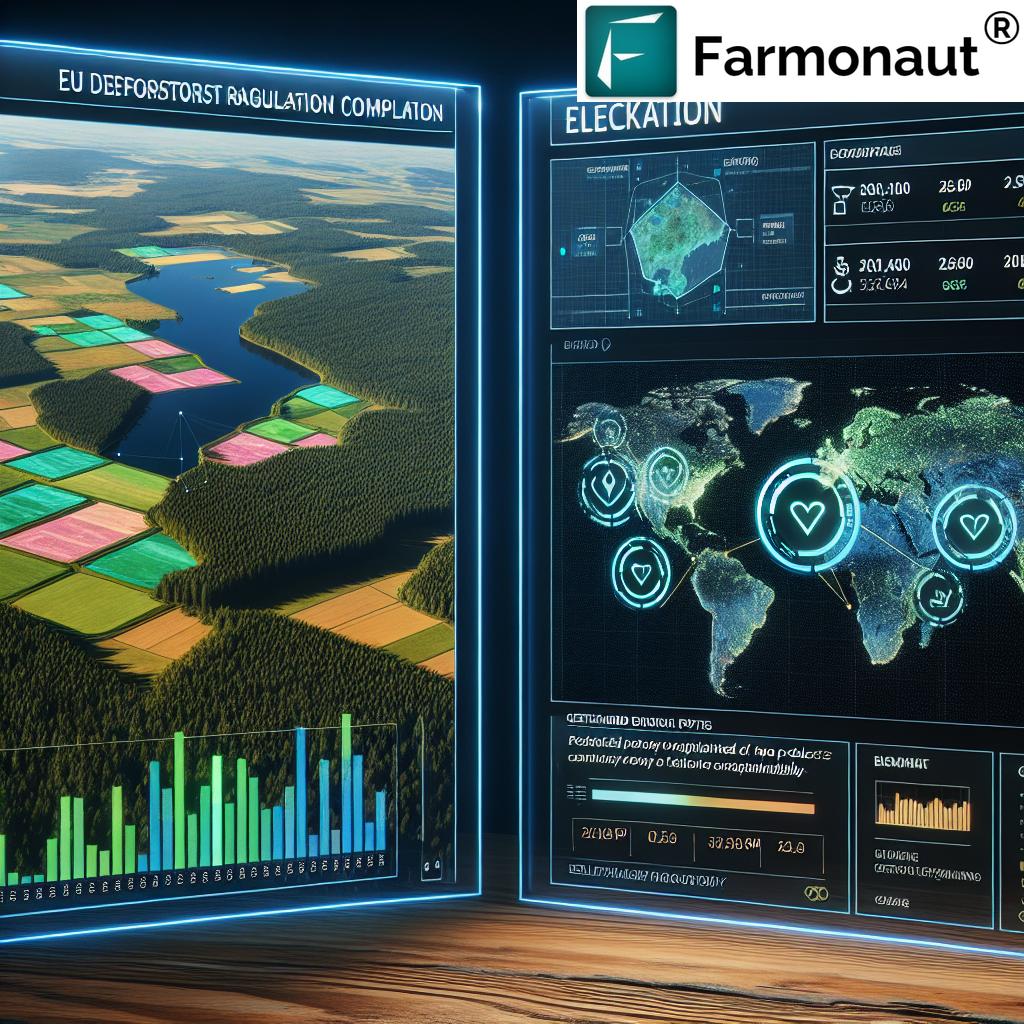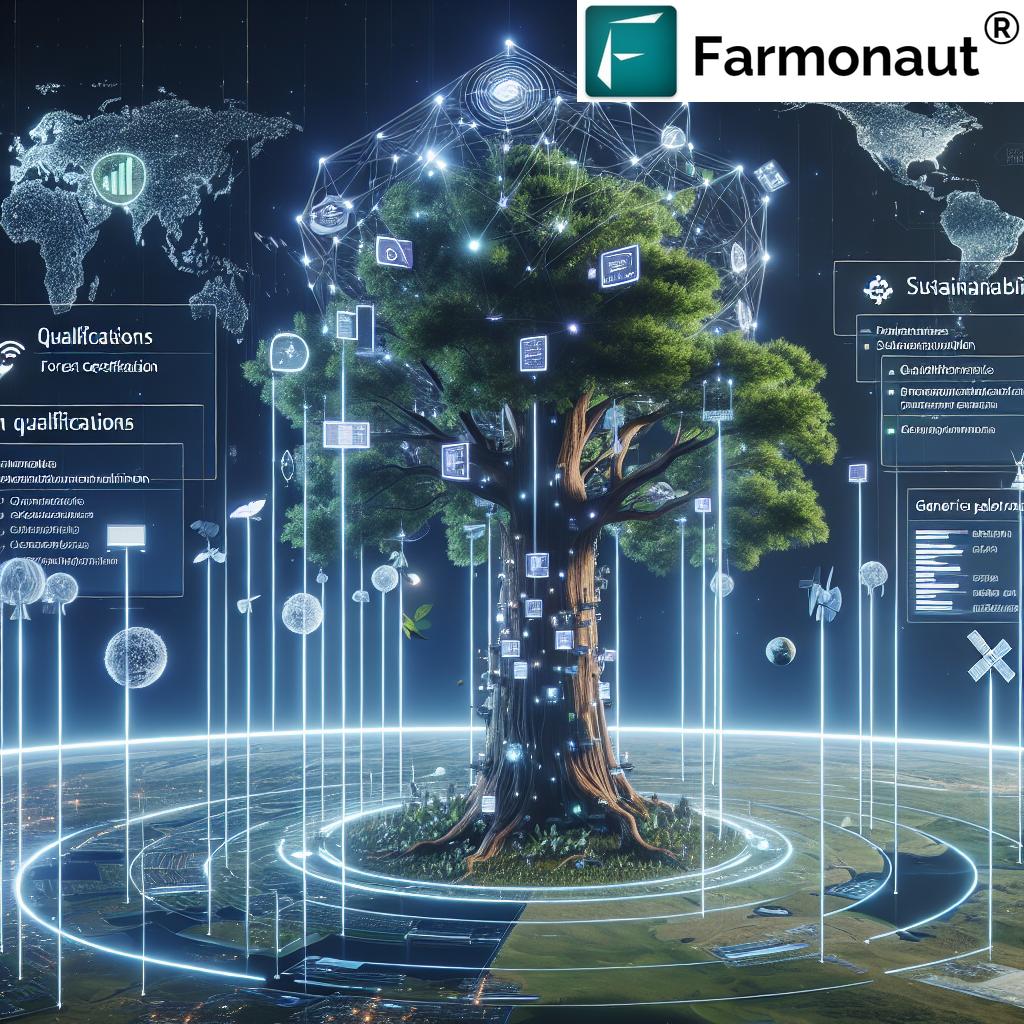Innovative Tech Solutions for EU Deforestation Regulation Compliance: Advancing Sustainable Forest Management
“The EU Deforestation Regulation’s implementation is delayed until December 30, 2025, impacting global forestry sustainability practices.”
Welcome to our comprehensive exploration of the EU Deforestation Regulation (EUDR) and its profound impact on sustainable forest management and responsible sourcing practices. As we navigate through this evolving landscape, we’ll delve into the innovative technologies and collaborative efforts shaping the future of forestry worldwide.
The EU Deforestation Regulation: A Game-Changer for Global Forestry
The EUDR represents a pivotal shift in how we approach forest conservation and sustainable resource management on a global scale. With its implementation now scheduled for December 30, 2025, businesses and forest managers have a critical window to adapt and innovate.
This regulation aims to ensure that products sold in the EU market do not contribute to deforestation or forest degradation. It covers a wide range of commodities, including wood, palm oil, soy, beef, cocoa, and coffee, along with products derived from these materials.

The Role of Forest Certification Standards
As the EUDR takes center stage, forest certification standards are becoming increasingly crucial. These standards, provided by leading stewardship organizations, offer a framework for sustainable forest management and responsible sourcing. They ensure that forests are managed in a way that preserves their ecological, economic, and social functions for present and future generations.
- Forest Stewardship Council (FSC): A globally recognized certification system that promotes responsible management of the world’s forests.
- Programme for the Endorsement of Forest Certification (PEFC): The world’s largest forest certification system, working to promote sustainable forest management through independent third-party certification.
These certification systems provide businesses with a clear path to compliance with the EUDR, offering verified standards that align with the regulation’s requirements for sustainability and traceability.
Innovative Technologies Revolutionizing Sustainable Forest Management
“Satellite forest monitoring and blockchain supply chain tracing are two key technologies revolutionizing sustainable forest management compliance.”
The forestry sector is experiencing a technological revolution, with innovative solutions emerging to address the challenges posed by the EUDR and other sustainability regulations.
Satellite Forest Monitoring
Satellite technology has transformed our ability to monitor and manage forests on a global scale. High-resolution satellite imagery, combined with advanced data analytics, allows for real-time monitoring of forest cover, detection of deforestation, and assessment of forest health.
At Farmonaut, we’re at the forefront of this technology, offering satellite-based solutions that provide valuable insights for forest managers and businesses. Our platform uses multispectral satellite images to monitor vegetation health, soil moisture levels, and other critical metrics that are essential for sustainable forest management.
Learn more about our satellite monitoring solutions:
Blockchain Supply Chain Tracing
Blockchain technology is revolutionizing supply chain management in the forestry sector. By creating an immutable, transparent record of each step in the supply chain, blockchain ensures the traceability and authenticity of forest products from source to consumer.
Our blockchain-based traceability solutions at Farmonaut offer:
- End-to-end visibility of the supply chain
- Verification of sustainable sourcing practices
- Enhanced trust and credibility for businesses
Explore our blockchain traceability solutions:
Collaborative Efforts for Sustainable Forestry
The implementation of the EUDR has sparked unprecedented collaboration between governments, businesses, and organizations worldwide. These partnerships are crucial for developing and implementing sustainable forestry practices that meet the regulation’s stringent requirements.
Government Initiatives
Governments around the world are taking proactive steps to align their forestry policies with the EUDR:
- Strengthening legal frameworks for forest protection
- Investing in forest monitoring and enforcement capabilities
- Developing national traceability systems for forest products
Business Adaptations
Businesses are rapidly adapting their practices to ensure compliance with the EUDR:
- Implementing rigorous due diligence processes
- Adopting certified sustainable sourcing practices
- Investing in technology for supply chain traceability
NGO Support
Non-governmental organizations play a crucial role in supporting sustainable forest management:
- Providing expertise and guidance on best practices
- Monitoring and reporting on forest conservation efforts
- Facilitating partnerships between stakeholders

The Impact of Genetic Engineering in Forestry
Genetic engineering is emerging as a powerful tool in sustainable forest management. This innovative approach offers potential solutions to challenges such as disease resistance, climate adaptation, and improved wood quality.
Benefits of Genetic Engineering in Forestry
- Enhanced Disease Resistance: Genetically engineered trees can be more resistant to pests and diseases, reducing the need for chemical interventions.
- Improved Climate Adaptation: Trees can be engineered to better withstand changing climate conditions, ensuring the long-term viability of forests.
- Faster Growth Rates: Engineered trees can grow more quickly, potentially reducing pressure on natural forests.
- Enhanced Wood Quality: Genetic modifications can improve wood properties, making it more suitable for various applications.
While genetic engineering offers significant potential, it’s crucial to approach its application with caution, considering potential ecological impacts and adhering to rigorous safety standards.
Timeline for EUDR Implementation
Understanding the timeline for EUDR implementation is crucial for businesses and forest managers to prepare effectively. Here’s a comprehensive overview:
| Year | EUDR Milestone | Technology Advancement | Adoption Rate (%) | Impact on Sustainability (Scale 1-5) |
|---|---|---|---|---|
| 2023 | EUDR Adoption | Initial satellite monitoring systems | 20% | 2 |
| 2024 | Preparatory Phase | Blockchain traceability pilots | 35% | 3 |
| 2025 | EUDR Implementation (Dec 30) | Advanced AI-driven forest analysis | 60% | 4 |
| 2026 | Full Compliance Required | Integrated satellite-blockchain systems | 75% | 4 |
| 2027 | Review and Adjustment | Genetic engineering applications | 80% | 5 |
| 2028 | Global Impact Assessment | Quantum computing for forest modeling | 85% | 5 |
| 2029 | Policy Refinement | Nanotechnology in forest management | 90% | 5 |
| 2030 | Long-term Sustainability Goals | Fully automated forest management systems | 95% | 5 |
This timeline highlights the parallel progression of regulation and technological innovation in the forestry sector. As we approach the 2025 implementation date, we expect to see accelerated adoption of advanced technologies to ensure compliance and enhance sustainability practices.
Farmonaut’s Role in Sustainable Forest Management
At Farmonaut, we’re committed to providing cutting-edge solutions that help forest managers navigate the evolving landscape of sustainability and regulation. Our satellite-based monitoring and blockchain traceability tools are designed to meet the rigorous requirements of the EUDR and other global sustainability standards.
Key Features of Farmonaut’s Forest Management Solutions:
- Real-time Forest Health Monitoring: Our satellite imagery analysis provides up-to-date information on forest health, enabling early detection of issues like deforestation or degradation.
- AI-Powered Insights: Our Jeevn AI advisory system offers personalized recommendations for sustainable forest management practices.
- Blockchain Traceability: Ensure transparency and accountability throughout the forest product supply chain with our blockchain-based traceability solutions.
- Carbon Footprint Tracking: Monitor and reduce the environmental impact of forestry operations with our carbon footprinting tools.
Explore our forest management solutions:
The Future of Sustainable Forest Management
As we look towards the future, the integration of advanced technologies and rigorous sustainability standards will continue to shape the forestry sector. The EUDR serves as a catalyst for innovation and collaboration, driving the development of more effective and efficient forest management practices.
Emerging Trends:
- AI and Machine Learning: Advanced algorithms will enhance our ability to predict and prevent forest degradation.
- IoT in Forestry: Smart sensors and connected devices will provide real-time data on forest conditions.
- Drone Technology: Unmanned aerial vehicles will offer high-resolution mapping and monitoring capabilities.
- Bioinformatics: The integration of biological data with computational tools will advance our understanding of forest ecosystems.
These technological advancements, combined with strong policy frameworks like the EUDR, will pave the way for a more sustainable and resilient global forestry sector.
Conclusion
The EU Deforestation Regulation marks a significant milestone in our global efforts towards sustainable forest management. As we approach the 2025 implementation date, the forestry sector is witnessing unprecedented innovation and collaboration. Technologies like satellite monitoring and blockchain traceability, coupled with genetic engineering advancements, are reshaping how we manage and protect our forest resources.
At Farmonaut, we’re proud to be at the forefront of this transformation, offering cutting-edge solutions that empower forest managers and businesses to meet the challenges of sustainability and compliance. By embracing these innovations and working together, we can ensure a future where our forests thrive, supporting both biodiversity and sustainable economic development.
As we continue to navigate this evolving landscape, stay informed and explore how our solutions can support your sustainable forest management efforts.
FAQs
- What is the EU Deforestation Regulation?
The EU Deforestation Regulation is a policy aimed at ensuring products sold in the EU market do not contribute to deforestation or forest degradation globally. - When will the EUDR be implemented?
The EUDR is scheduled to be implemented on December 30, 2025. - How can businesses prepare for EUDR compliance?
Businesses can prepare by adopting certified sustainable sourcing practices, implementing traceability systems, and leveraging technologies like satellite monitoring and blockchain. - What role does genetic engineering play in sustainable forestry?
Genetic engineering in forestry can enhance disease resistance, improve climate adaptation, and increase growth rates, contributing to more sustainable forest management practices. - How does Farmonaut support sustainable forest management?
Farmonaut offers satellite-based monitoring, AI-powered insights, blockchain traceability, and carbon footprint tracking tools to support sustainable forest management and EUDR compliance.




